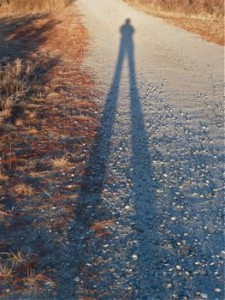Pearls from Pain, Part 12: Self Discovery, Part 1

“If you are interested in transformation, no element is more important than developing a love of truth. The truth encompasses both our fearful reactions and the greater resources of our soul.” (The Wisdom of the Enneagram, 345)
Working on ourselves is one of the hardest things because success depends on uprooting our own blind spots. It is also one of the most intrinsically rewarding habits we can adopt. We can do it anywhere, it improves our life, and once we develop the habit we need never be bored again.
When first learning to self observe it is not unusual to react with frustration, condemnation, disgust, shame or rage when we find out we were “wrong” about something we thought we understood. If we find we have mis-assessed our own motivations, for example, or have come to realize that we were indeed responsible for something we were mad at someone else about, we may swing from denial into condemnation.
Self dis-covery is a spiritual victory. As we develop, we learn to invite experiences of seeing-through. We begin to celebrate the grace of awareness when we suddenly see through a blind spot and discover a ‘new’ pocket of which we were previously ignorant. It is a small but important wonder to find out that a self-concept or assumption about life is incorrect. As we awaken this way we discover that what we imagined to be ‘awake’ was yet another set of concepts. Learning to welcome insight keeps us humble and cultivates compassion.
Learn to sense the difference between shutting down to protect an old belief or a wound and opening to discovery. We  can recognize the shift from the former to the later by the feeling of being flowing and open, and by an easy willingness to look at how we respond to and impact others.
can recognize the shift from the former to the later by the feeling of being flowing and open, and by an easy willingness to look at how we respond to and impact others.
In the absence of honest self observation, attempts to ‘BE’ positive backfire in an attempt to get rid of or avoid having negative feelings. Suppression or denial of real feeling is not a positive state. It is a subtle form of annihilation. Authentic positive feeling springs from self-acceptance.
Staying in touch with discomfort while simultaneously practicing positive intention makes us powerful and creative.
As a beginner I used techniques as a means not just to identify, accept and balance emotions, but in an attempt to eradicate them. After spending more than a decade using different means to track down, explore, and sedate emotions, I realized that I still didn’t allow myself to fully FEEL them.
I still believe techniques for working with emotion have value. They increase awareness. They help us to identify hidden emotions. They can release energy blocks that make wounds into strongholds of resistance and denial. I do not question the value of such techniques.
Intention is important. Most beginners want to be RID OF the nuisance of negative emotions. I know I did. The basic thrust of trying to eliminate our humanity is not an act of love.
Finding ways to orient ourselves that relax negative emotions and make them less likely to show up is a qualitatively different process.
Methods and techniques do not make us super-human. Inner Work makes us flexible, humble, and self-accepting. Even the most developed therapists and the most advanced spiritual teachers remain fully human. A major spiritual leader, Meher Baba, even said, “Becoming fully human is the most difficult thing to do on the spiritual path.”
Every personality has weaknesses and points of sensitivity. What changes as we grow is not whether we have challenging emotions but how we respond to them. Techniques and practice assist us to accept and acknowledge and communicate what is going on inside, and to move easily into balance and resolution.
What is the difference between sinking in to feel your pain and feeling self pity?
How is the energy different in your body?
What the difference in your subtle intention in the two states?
During a process of self-discovery, keeping a journal may help clarify your thoughts and feelings and keep them from becoming circular.




















